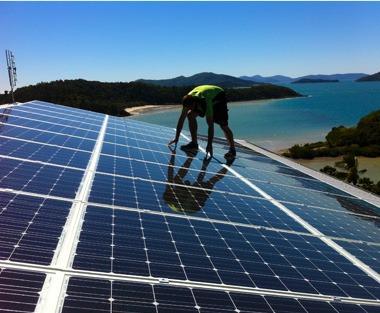According to a recent report done by Citigroup, solar power could reach ‘socket parity’ in some countries as early as 2020. Likewise, utility-scale grid parity in many parts of the world will be achieved come 2030.
Investments for solar and battery storage is predicted to beat the payback on solar-only systems according to the same projections of the investment bank Citigroup. This will leave utility business models and fossil fuel generators terminally challenged.
Citigroup predictions for the future
Citigroup’s forecasts are based on the assumption that the costs of battery storage will keep on falling by one-half for the next 5 to 7 years. This will lower the cost to approximately $230 per kilowatt hour.
This makes battery solar battery storage financially attractive enough to encourage the increase in manufacturing. If this happens, it will further accelerate the reduction in battery storage system costs to around $150 per kilowatt hour.
Hopefully, this will also result in the elimination of subsidies, which will in turn deliver paybacks for solar plus storage by about 6 to 7 years in Australia as well as other European countries.
When all these things fall into place, solar power, as well as solar battery storage would also become attractive at grid level in many parts of the world by 2030. This would mean network operators all over the world would be installing solar systems in greater numbers.
Citigroup’s report
The title of the Citigroup report is ‘Energy Darwinism II. It is a follow up report to the original Energy Darwinism report released in 2013. The report tackles the potential impact that socket parity will have on existing utilities.
In their 2013 report, the investment bank said that the global energy mix was shifting more rapidly than was widely perceived. This will have major implications for utilities, generators, consumers, as well as exporters of fossil fuels, such as Australia.
Citigroup’s latest report projects a 240 gigawatt worldwide market for energy storage worth over $400 billion by 2020. This estimate does not include car batteries. But this situation will have a significant and even terminal impact on existing parts of the worldwide energy system.
“We estimate that solar systems have already reached socket parity in most parts of Continental Europe, South West US and Australia and will do so in Japan by 2016 and in the UK and Brazil by early 2020s,” says the new Citigroup report.
“That means that, even with no subsidies, it is economic for households in those regions to install rooftop solar,” states the report.
“The introduction of battery storage in a distributed generation system would increase upfront costs for households but would improve their ongoing cash flow position as it would minimize power purchases from the grid,” the report emphasizes.
The forecasts made in the latest Citigroup report follows the conclusions of several major investment banks such as UBS and HSBC. These banks also projected that both grid operators and consumers look to battery and storage technologies to cut the payback period of solar systems.



